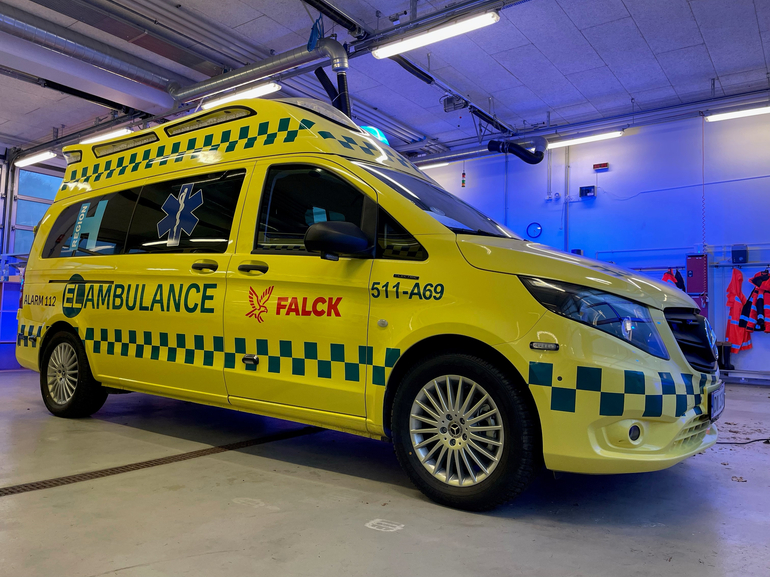Falck is well underway with the green transformation of patient transport, and now the turn has come for the transformation of ambulances, where the requirements are much higher. Ambulances that run on electricity are a relatively unproven technology, and therefore Falck and the Capital Region are collaborating on a trial with an electric ambulance.
The experiences from the electric ambulance will help to shape and mature the technology, so that knowledge is obtained about how electric ambulances may become part of ambulance operations in the future. Falck wants to promote the green conversion of ambulances and has a long-term strategy to convert ambulances to electricity and other renewable energy sources in line with the maturity of the technology. Falck expects the first electric ambulances to be used in regular ambulance operation in 3-4 years.
"It is a major milestone in our green transition. Our employees have delivered a difficult but fantastic job leading up to the launch of the electric ambulance, where the weight and the available space have been optimized down to the smallest detail, so that we have created an operational and scalable electric ambulance. Our biggest direct emissions come from our fuel consumption, and therefore it is crucial that we promote the use of ambulances powered by electricity and other renewable energy sources,"
says Jakob Riis, CEO of Falck.
The electric ambulance looks like a regular ambulance, but it is slightly smaller in size because electric ambulances are heavier than ordinary diesel ambulances. By reducing the size slightly, the electric ambulance achieves a higher speed and does not need to be charged as often as a larger ambulance.
The electric ambulance meets all European standards in terms of equipment and function, and it is similar in size to some of Falck's ambulances in Germany and Sweden.
The new electric ambulance, which is being put into operation in the Capital Region:
Mercedes Benz e-Vito Tourer L3
- No CO2 emissions when driving
- Gross weight: 3,500 kg
- Maximum speed: 160 km per hour
- Reach: 233 km on one charging
- Payload: 930 kg
- Battery capacity: 60 kWh
- Quick charging: 35 min from 10% to 80%.
50% reduction of direct CO2 emissions before 2030
The new electric ambulance is just one of the initiatives that Falck has launched to ensure a green transformation of the group.
With one of the world's most advanced ambulance services in Europe and the US, Falck has a strong focus on how to reduce the CO2 footprint from heavier vehicles such as ambulances. The ambulance business accounts for 75% of the group's direct CO2 emissions.
The green transformation at Falck is both about reducing CO2 emissions for existing services, and about developing new ways of delivering healthcare services. With sustainable healthcare services that increase accessibility and prevent hospitalizations, more people are helped with fewer resources and with a smaller carbon footprint.
Falck has a goal of reducing its own direct CO2 emissions by 50% from 2021 to 2030 and committed to the Science Based Targets initiative in 2022.



